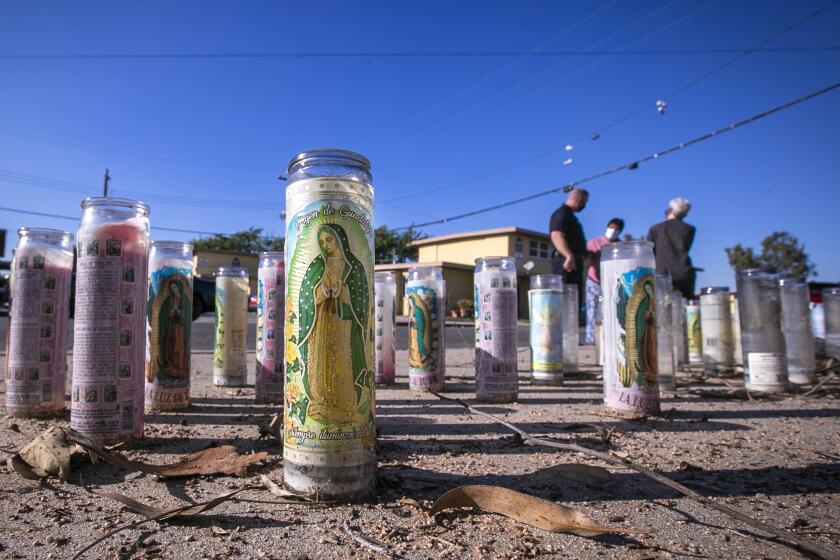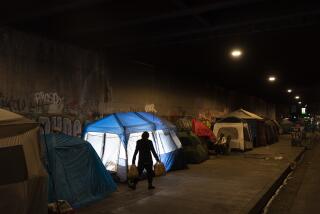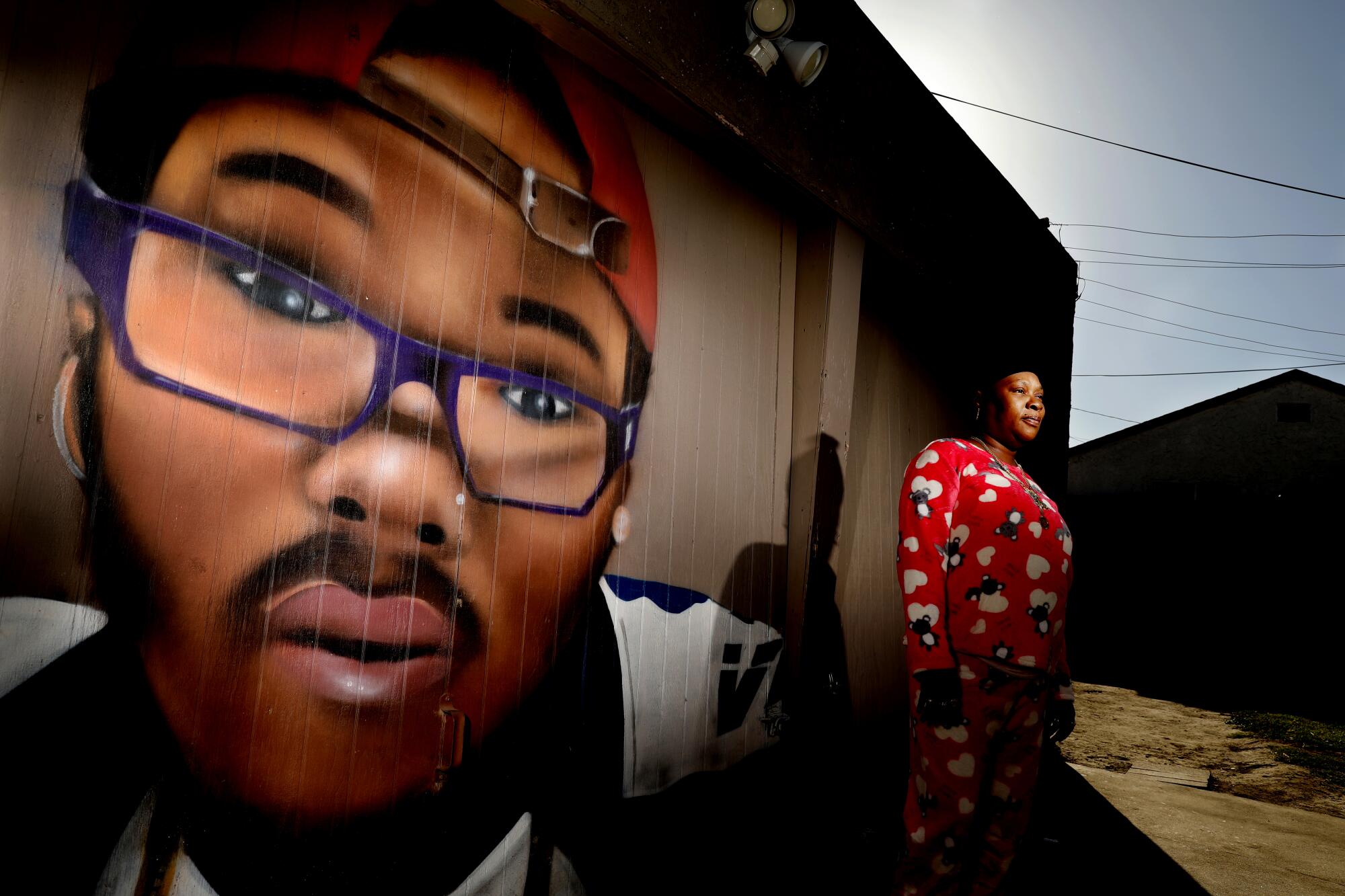
- Share via
In Latasha Bracks’ Watts living room, a cluttered shrine to her three sons and three daughters sits atop a waist-high pedestal near the front window.
There are framed photos of their smiling faces and artifacts from their lives, including her 18-year-old son Pierre Monroe’s high school diploma and basketball trophies.
Rising above the keepsakes is a gleaming silver-and-blue urn, shaped like an oversize egg in an egg cup.
“That’s my baby,” Bracks said one winter afternoon, gesturing toward the metal vessel. “His ashes are in there.”
Tashon Logan, her eldest son, was shot to death at age 19 on March 31, 2019 — less than four hours before rapper Nipsey Hussle was gunned down in front of his South Los Angeles store.
She is not the first mother to bear the weight of raising children in a tough neighborhood with more gangs and guns than opportunity. But hers is an uncommon common story, one of atonement and second chances.
Bracks is a 47-year-old single mother and recovering addict who lived for two years in a rescue mission and a string of flophouses before finding a stable home to raise her family. She lost one son and almost lost another.
And as she works through the grief and pain of Logan’s slaying, she is newly focused.
On bettering herself and her community.
On her two remaining sons — Monroe, who’s just a year shy of the age his older brother was when he was killed, and 13-year-old Lance Gardner.
On the job of keeping them alive.
“I keep them out of trouble,” Bracks said. “That’s what I do.”
::
In front of Bracks’ tan stucco duplex, a tall black fence keeps her neighbor’s two big dogs in the yard where they stand guard. She’s been robbed not far from her home. Last year alone, three people were killed within three blocks of where she and her family live.
Watts is infamous for six days of rioting in 1965 that left 34 people dead and destroyed hundreds of structures. The neighborhood endured high rates of violence during the 1980s and ’90s.
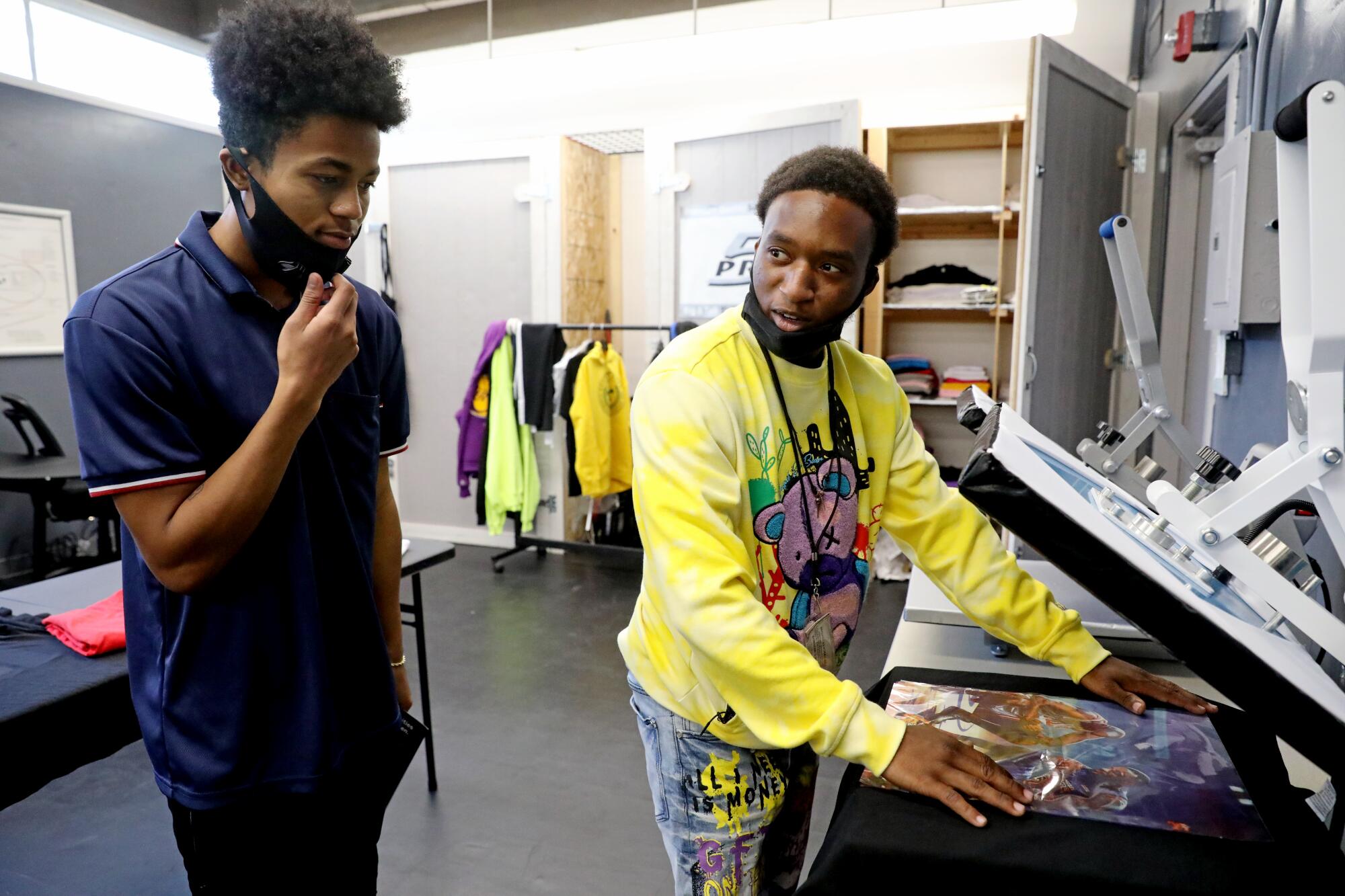
Since the COVID-19 pandemic began, the number of homicides in L.A. has risen sharply. Twenty-five people were killed in Watts’ 2.12 square miles last year, up from four in 2018.
Bracks was born and raised in Compton, which butts up against Watts. The slice of Los Angeles County she has called home can be a difficult place to grow up and have a family.
Before she moved to Watts, during her lowest years of drug use and homelessness, she would buy and resell lighters, condoms, sodas, food and other goods, managing to scrape together enough money and connect with enough services to avoid sleeping on the street.
She was charged multiple times with drug-related crimes and sentenced in 2008 to what she has resolved to be her final stint in a county jail. She was pregnant with Lance at the time; Logan was just 8. A year later, the Los Angeles Homeless Services Authority helped put her in the Watts home.
Bracks has trouble talking about her late son’s childhood. Her emotions are still too raw, she said. So it’s unclear who cared for Logan and her other children while she was locked up or homeless.
But now she’s trying to make up for past mistakes.
She said she hasn’t used crack in 14 years or PCP in 26. She does not have a job, but makes ends meet via government assistance and selling T-shirts and shoes at a local swap meet.
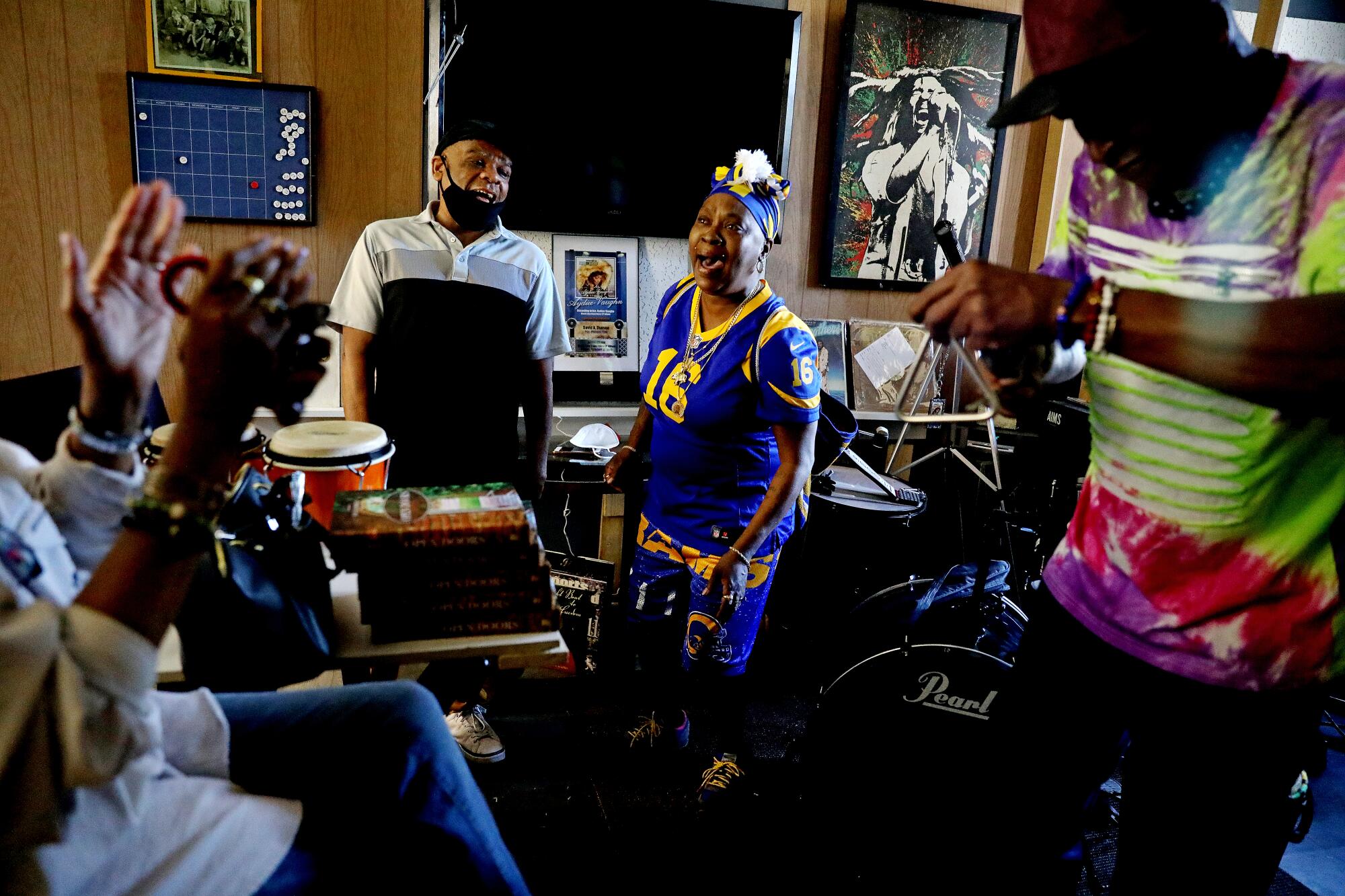
She buys baby formula and diapers for struggling young mothers in Watts. And she helps homeless people on skid row, drawing on her personal experiences.
“God took everything away from me when I was hanging out with the gangbangers and thugs downtown. And he took me away from there, and my life is better now,” she said.
“It feels so good to be clean and helping your family like you’re supposed to.”
::
Bracks began to turn her life around before Logan started middle school. Yet not long after he entered high school, she says, she was fighting to keep him off the streets she had left behind a few years earlier.
Logan was always a troublemaker, she said, but he had a good heart. Once, when he was about 12, Bracks couldn’t find some cash she had left around the house. Logan admitted he’d taken the bills to buy her a Valentine’s Day gift. He didn’t have enough money of his own.
“I couldn’t even get mad at him. I just said, ‘Give me a hug.’ That’s a perfect illustration of good and bad,” she said as she stood near his urn. “He was a sweet kid, but he was bad as hell.”
Watts had at least 22 homicides in 2021, a more than fivefold increase from 2018. But “Watts is not equal to crime,” one resident says.
A few years later, the bad began to outpace the good, Bracks said. Logan linked up with a local gang and was involved in altercations with rivals.
Bracks didn’t want to say what gang Logan ran with, but the part of Watts where she raised him beginning in late elementary school is Grape Street Crips turf.
On a recent walk through her neighborhood, tags name-checking the Crips set were visible along several blocks — drawn on a power box, sprayed on a cinder-block wall, dripped onto a corrugated metal barrier in a litter-strewn, bougainvillea-lined alleyway.
“He started talking about gangs a lot,” Bracks said. “And I told him, ‘That ain’t you, you need to stop. You can’t be doing this, baby. You can’t do this.’”
Her protests went unheeded.
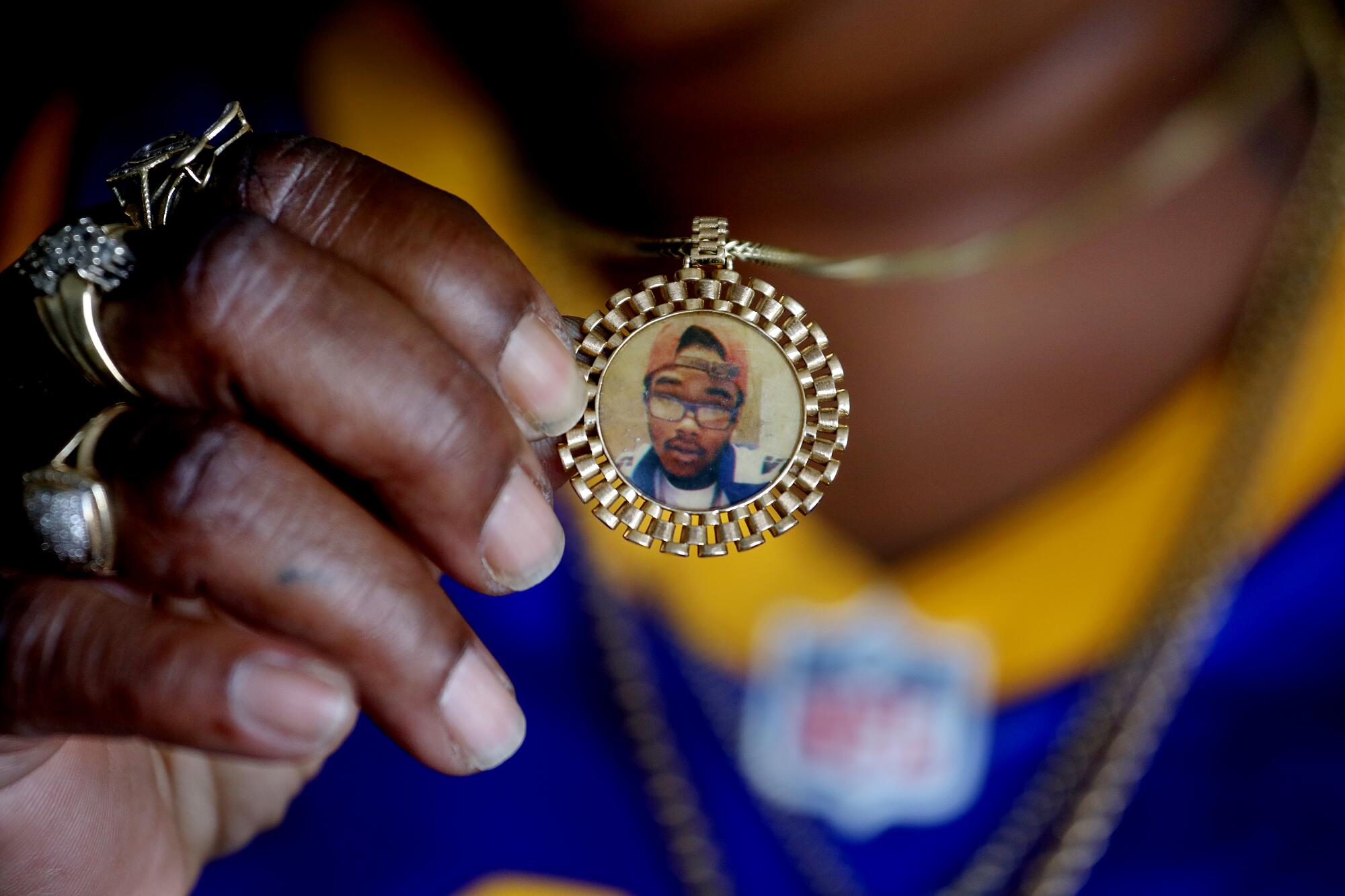
After Logan was kicked out of multiple high schools, Bracks helped him enroll in a job corps program in downtown Los Angeles. He was 17. Eventually, he was kicked out of that program too.
Logan knew his mother wouldn’t let him live under her roof if he was getting in trouble, so he floated from place to place in L.A. for months. Then, late in 2018, he took up with a young woman and ended up in Las Vegas.
Bracks’ description of her son’s last moments echoes the police narrative.
The young woman “took my baby on the other side of town and got out of the car and the other guy walked up,” Bracks recounted. “And he blew my baby’s brains out. … My baby didn’t have a chance.”
Logan’s name wasn’t added to the list of homicide victims in Los Angeles in 2019, more than half of whom died in gang-related incidents, according to the LAPD.
But Bracks still draws a direct line between Logan’s L.A. life and his violent death.
::
At the far end of Bracks’ cracked driveway, a California fan palm towers over a worn, free-standing basketball hoop. The crumbling skateboard Logan rode from the age of 11 sits nearby.
Just beyond the palm’s thatched trunk, airbrushed on the door of the garage, is a full-color portrait Bracks commissioned of her fallen son. He wears a red baseball cap and gold chain and peers through blue-rimmed glasses at the home he left behind.
One recent chilly Saturday afternoon, Monroe sat at a plastic table in the backyard. He scrolled through his phone, barely an arm’s length from the mural of his older brother.
Monroe stands about 5 feet 3 and has a tight clutch of black curls. He played small forward for his high school’s basketball team, and his YouTube page features videos of him draining shot after shot in an indoor gym.
He makes $15 an hour at a coronavirus testing site at the historic Watts Happening Cultural Center. Bracks got him the job. He plays basketball in the center’s recreation area and participates in a painting program. He spent hours one recent Saturday, as he often does, in the center’s screen-printing studio, adorning T-shirts with images of Hussle and Kobe Bryant, the late Lakers star.
Asked what he does to stay out of the kind of trouble that got his older brother killed, Monroe said his mother doesn’t allow him to do much more than spend time at the cultural center, “go to work and stay in the house.”
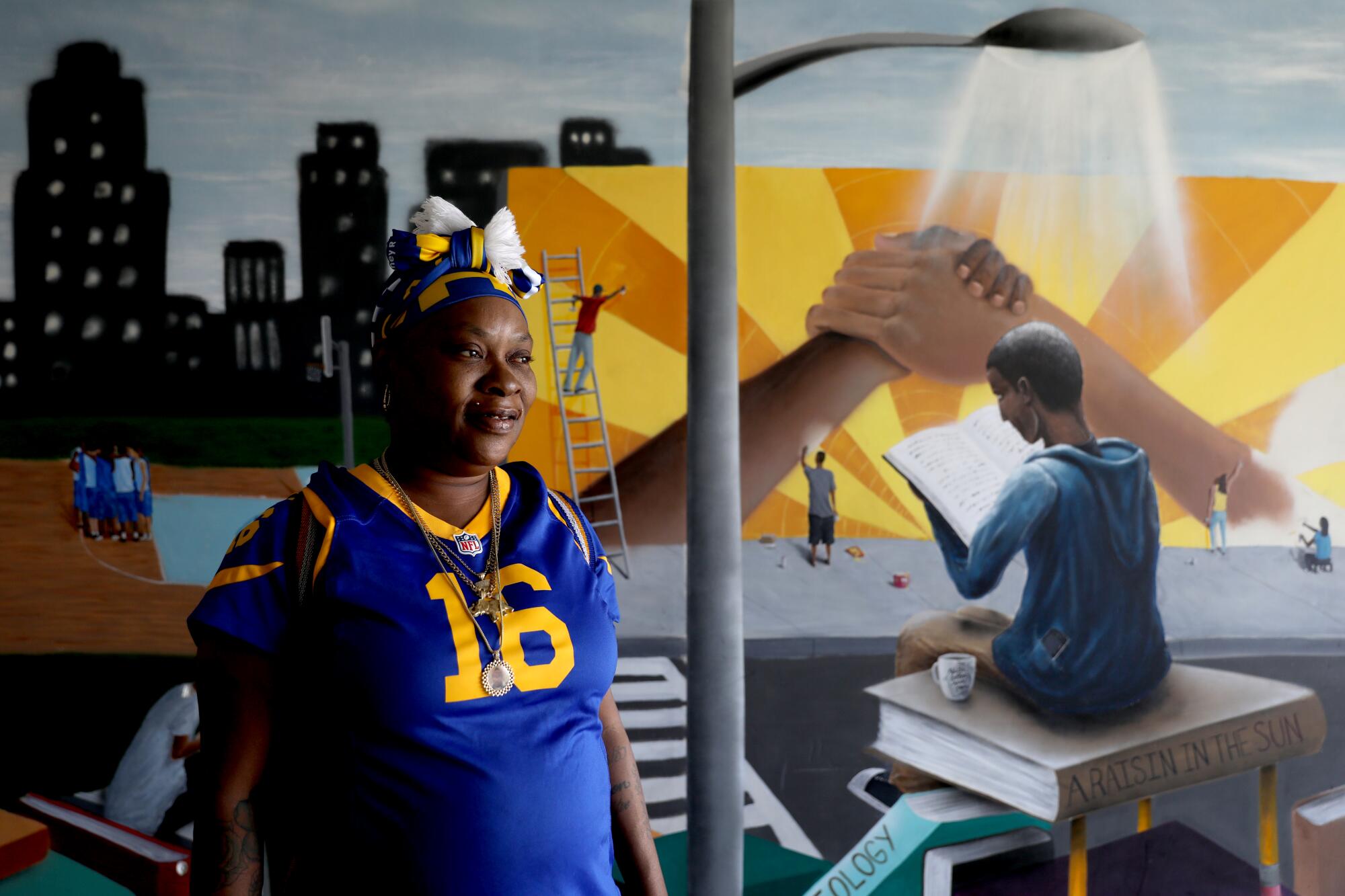
That’s just fine with Monroe, for whom L.A. is a whole new world. In October, he saw the city — and his mother — for the first time in more than 15 years.
When Monroe was 2 years old, he went to stay with his father in Little Rock, Ark. One day, his father left him with his aunt and took off in her car, Bracks said.
After several days without word from his father, child protective services got involved. Monroe was taken from his aunt’s home and later adopted by a foster family in Arkansas. His birth name was Jaden Williams, but his foster mother had it changed to Pierre Monroe. That remains his legal name.
Monroe was separated from Bracks until he graduated from high school last year. He turned 18 in July, and by Halloween he was on a bus to L.A. The following month, she served him Thanksgiving dinner for the first time since he was a toddler.
He’s a spitting image of Logan, whom he last saw when he was still in diapers. Monroe has the wide-eyed demeanor of the just-off-the-Greyhound transplant from the South that he is, replete with “yes sirs” and “no ma’ams.”
He has no memory of Logan. But the painting on the garage door reminds him every day of what could be in store for him and his younger brother Lance if the streets draw them in.
“I don’t want to gangbang. It’s not the life I want to live,” Monroe said. “I try to avoid it. I don’t want my brother doing that. So I’m a positive role model.”
::
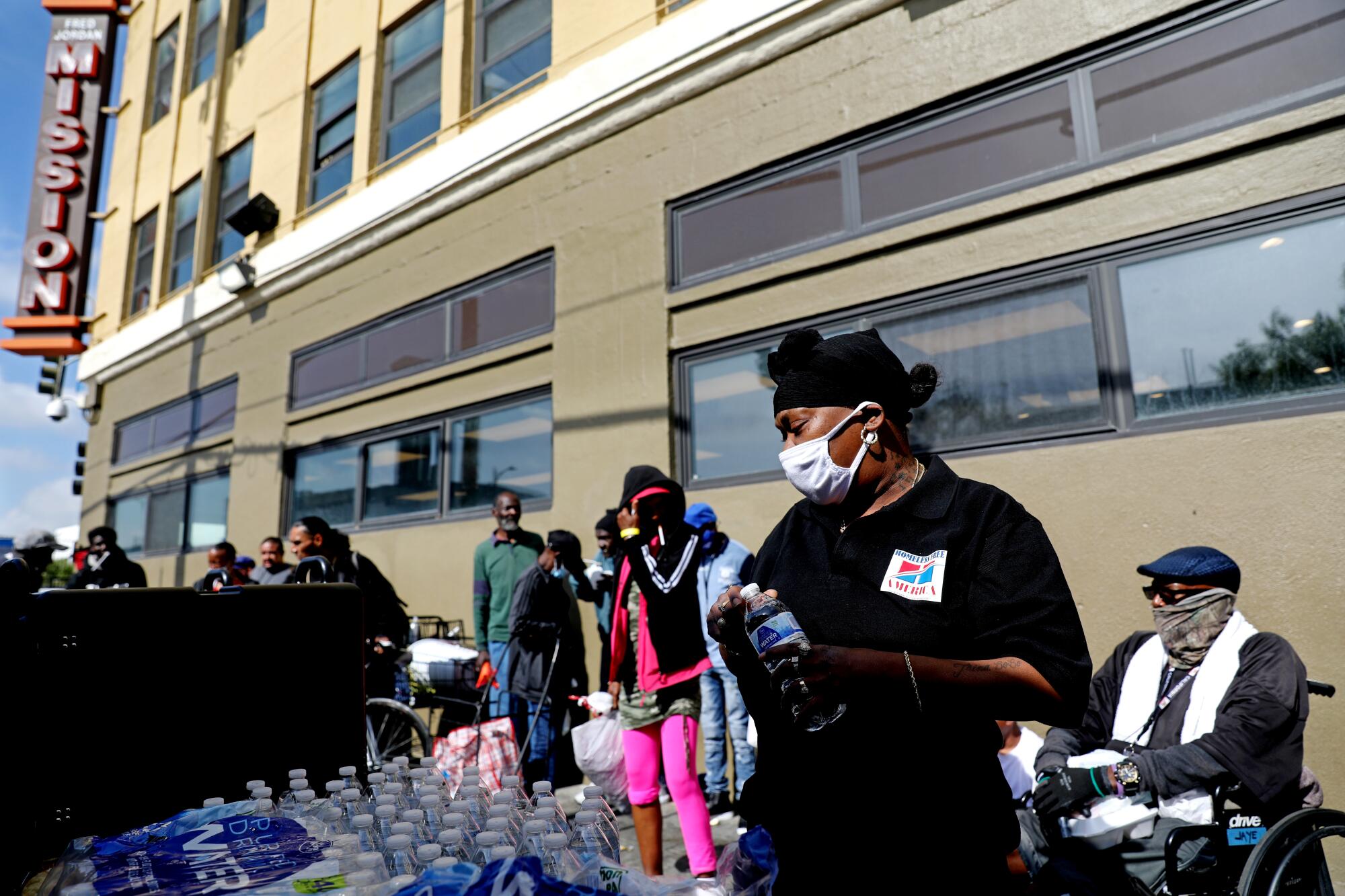
Just after 10 a.m. on March 19, Lou Hollingsworth backed a black bus along the curb outside the Fred Jordan Missions building in Skid Row. A decal on the water-streaked vehicle’s side bore the name of his Watts-based organization, Homeless Free America.
Several minutes later, Bracks arrived in a white sedan. She and Hollingsworth were among a group of volunteers distributing McDonald’s breakfast platters and bagged egg sandwich meals to the first 150 people who queued up on the sidewalk.
Bracks staffed a black plastic folding table piled with bottles of water.
“You have a choice: breakfast plate or sandwich. Grab a water too. Come on baby, move it through,” she said, as the crush of hungry people wound past. A squabble broke out between two men over their place in line. “Come on,” she admonished. “We’re gonna be positive today.”
Pushing shopping carts and walkers and carrying weathered duffels, overstuffed backpacks and grocery bags, the crowd moved swiftly through the line, exhausting the supply of food in 13 minutes.
Hollingsworth, Homeless Free America’s founder, said Bracks has been “a great help” to his organization.
“She’s always there, always calling me — ‘Lou, do you need me for anything? Whatever you need me to do.’ Johnny on the spot,” he said. “She’s just a beautiful human being.”
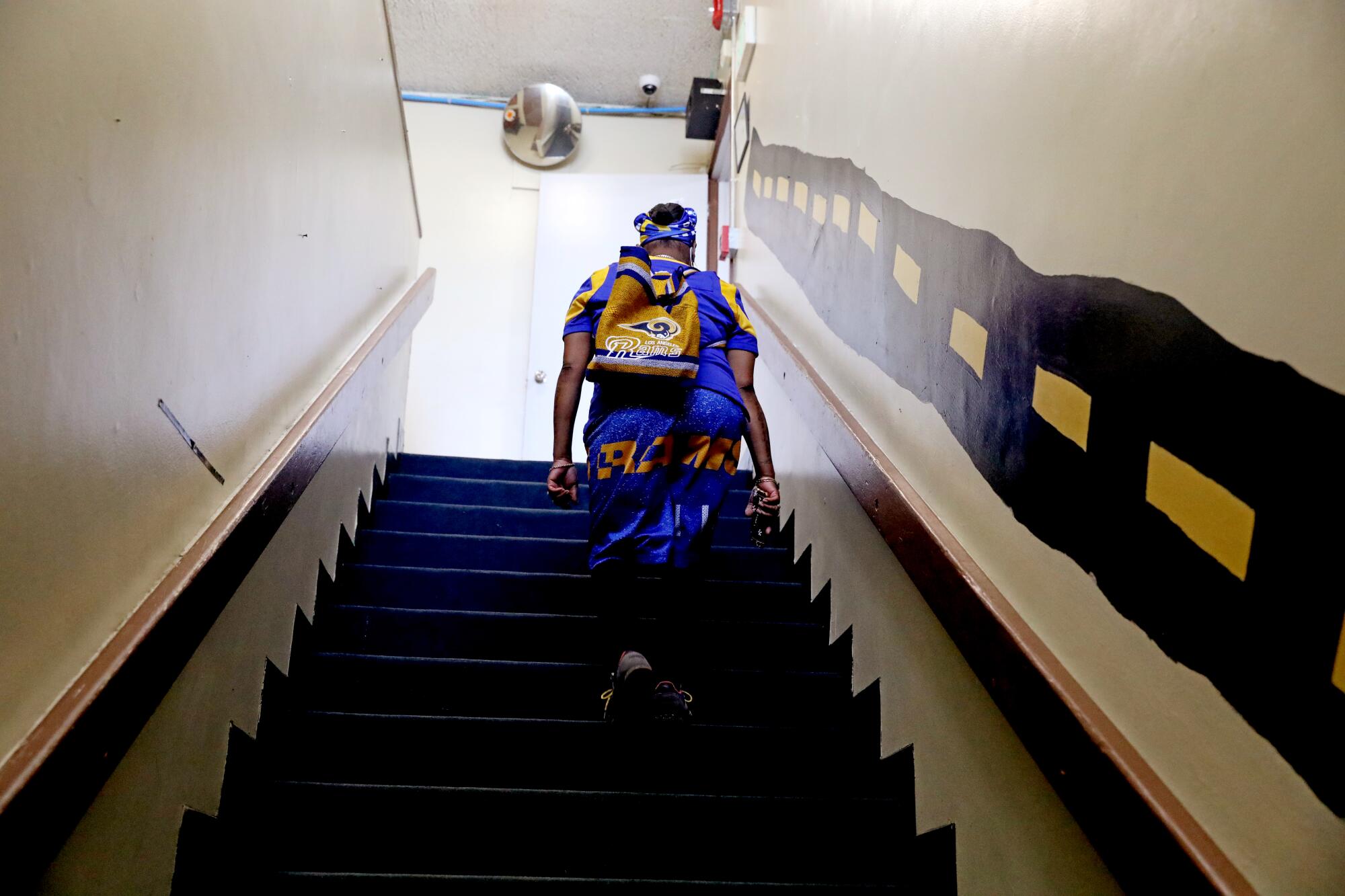
She didn’t have to worry about Monroe that day. Bracks knew he was safe back in Watts, helping test people for the coronavirus.
“I’m not fittin’ to lose another child. I’m glad that he don’t wanna gangbang, and that my other baby don’t wanna gangbang,” she said. “It’s like, ‘No Mama, no.’
“I’m like, ‘Thank God.’”
More to Read
Sign up for Essential California
The most important California stories and recommendations in your inbox every morning.
You may occasionally receive promotional content from the Los Angeles Times.
